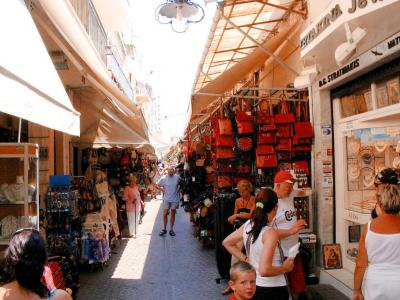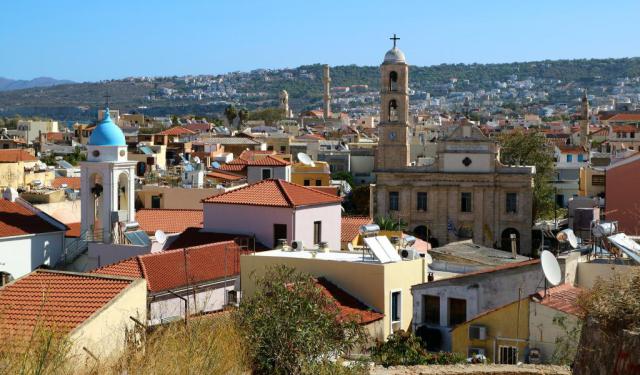Skridlof Street (Leather Street), Chania
Skridlof Street, better known as Leather Lane, is one of those places where history lingers in the air even as the present bustles around it. Tucked into the Old Town near the Municipal Market, the lane earned its reputation in the 19th century when shoemakers and bootmakers set up their workshops here. Their craft was legendary-this was the birthplace of the tall Cretan boots known as stivania, worn by shepherds roaming the White Mountains and later by rebels fighting for independence. The clatter of hammers on wooden lasts and the earthy scent of hides once filled the alley, giving it both its name and its identity.
Although the golden age of the bootmakers has long passed, echoes of it remain. Family-run shops still display traditional footwear alongside belts, bags, and sandals, some hand-made by descendants of those earlier craftsmen. Ordering a custom pair of boots, complete with the traditional wide trousers and headscarf that once accompanied them, is still possible for those who want a piece of living heritage.
Over time, the street has expanded beyond leather goods, and today its stalls and shops also sell jewelry, embroidery, and keepsakes of Crete. Yet Leather Street retains its role as a bridge between Chania’s mercantile traditions and modern life. Walking its narrow length, with shops pressing close and voices carrying down the alley, visitors glimpse how one trade once shaped a whole neighborhood and how its legacy still weaves into the city’s story.
Although the golden age of the bootmakers has long passed, echoes of it remain. Family-run shops still display traditional footwear alongside belts, bags, and sandals, some hand-made by descendants of those earlier craftsmen. Ordering a custom pair of boots, complete with the traditional wide trousers and headscarf that once accompanied them, is still possible for those who want a piece of living heritage.
Over time, the street has expanded beyond leather goods, and today its stalls and shops also sell jewelry, embroidery, and keepsakes of Crete. Yet Leather Street retains its role as a bridge between Chania’s mercantile traditions and modern life. Walking its narrow length, with shops pressing close and voices carrying down the alley, visitors glimpse how one trade once shaped a whole neighborhood and how its legacy still weaves into the city’s story.
Want to visit this sight? Check out these Self-Guided Walking Tours in Chania. Alternatively, you can download the mobile app "GPSmyCity: Walks in 1K+ Cities" from Apple App Store or Google Play Store. The app turns your mobile device to a personal tour guide and it works offline, so no data plan is needed when traveling abroad.
Skridlof Street (Leather Street) on Map
Sight Name: Skridlof Street (Leather Street)
Sight Location: Chania, Greece (See walking tours in Chania)
Sight Type: Attraction/Landmark
Guide(s) Containing This Sight:
Sight Location: Chania, Greece (See walking tours in Chania)
Sight Type: Attraction/Landmark
Guide(s) Containing This Sight:
Walking Tours in Chania, Greece
Create Your Own Walk in Chania
Creating your own self-guided walk in Chania is easy and fun. Choose the city attractions that you want to see and a walk route map will be created just for you. You can even set your hotel as the start point of the walk.
Chania Introduction Walking Tour
Nineteenth-century English traveler Robert Pashley swore Chania “will repay the traveler a hundredfold.” The story of Chania stretches deep into antiquity. Its earliest name, Kydonia, appears in the epic works of Greek poet Homer and is thought to derive from the quince fruit that once grew in abundance here. Archaeological evidence shows that as early as the 14th century BC, the Minoans built... view more
Tour Duration: 2 Hour(s)
Travel Distance: 3.2 Km or 2 Miles
Tour Duration: 2 Hour(s)
Travel Distance: 3.2 Km or 2 Miles




